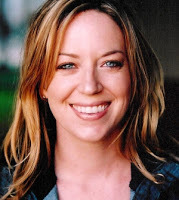Kenneth Atchity's Blog, page 210
May 25, 2013
The Bruce Collins Show- “The Lost Interviews”- Part 2- Guest: Dennis M. Walsh, “Nobody Walks: Bringing My Brother’s Killers to Justice”

“Walsh’s is a storyteller and the story he’s telling is as compelling as any police procedural with its unraveling of family secrets and lies.”
—Criminal Element
“Every once in a great while, a true crime is written that pulls at the heartstrings, while it also provides a tale of suspense that will be remembered for a good long time. This is that story.”
—Suspense Magazine
“Walsh, a criminal defense attorney for 30 years, tells the blistering true story of the 2003 murder of one of his brothers, Christopher, who was discovered in a trash barrel in a California storage locker. Despite law enforcement’s reluctance to pursue the case since the author’s father and younger brother were in prison on drug charges, Walsh shoulders the burden and delves into the nadir of the criminal underworld, quizzing thieves, skinheads, Nazi bikers, hookers, and porn queens to construct something meaningful from various lies and schemes. Good leads dead-end and seemingly ironclad confessions crumble, but the author’s resourcefulness and determination to catch his brother’s killers keep this sordid tale moving along at a quick clip. Walsh keeps his law practice operating throughout the ordeal, but still finds time to persuade reluctant witnesses to offer their testimony and cooperate with authorities; after four years of sleuthing, the trial finally begins. The hearing is a real corker, chock-full of twists and turns, and written with passion and an eye for drama. Taut and relentless, this chronicle of a former cold case puts one man’s resolve and the American idea of justice to the test.”
—Publishers Weekly
“Pulpy, engrossing account…Walsh captures the arc of his family’s involvement in an act of senseless malice, calling into question the cultural endurance of macho violence within certain subcultures and the difficulty of holding men responsible for horrific acts within the legal system’s overtaxed framework. Gritty, effective, personalized tale of the outlaw lifestyle and its consequences.”
—Kirkus Reviews
“Nobody Walks is a triumph, a grimly fascinating true tale of one street-wise criminal defense attorney’s quest for justice in the brutal murder of his brother. Dennis Walsh’s tireless four year odyssey plunged him headlong into an underworld populated by dopers, porn stars and gangsters and culminated in an explosive courtroom drama and the arrests of hundreds. Walsh’s captivating style engages, inspires and unnerves as he lends new meaning to the term ‘brotherly love.’”
—Kerrie Droban, author of Running with the Devil and A Socialite Scorned and co-author of Prodigal Father, Pagan Son
DENNIS WALSH has been a practicing criminal defense attorney for thirty years. Walsh was drafted in 1972 while he attended CSUN and joined the Navy. Upon returning home he received his BA from CSUN and went on to graduate from the University of Santa Clara School of Law. Walsh lives in California.
BRUCE COLLINS is a former pro wrestling promoter, an author of three published books (one of them with Brett Wagner, the host of The Speed Channel’s PASS TIME and voice of Monster Garage and another book with Ric Drasin, the middle Hulk in the 1970’s Incredible Hulk tv show with Bill Bixby and the creator of the Gold’s Gym logo) and the former book reviewer of Monster Radio, which was nationally syndicated in 84 radio markets. Bruce has hosted The Bruce Collins Show (and its’ genesis known as The Big Finale) since January, 2006. The Bruce Collins Show graduated to AM radio in 2009 and spent two years broadcasting at WSMN 1590 AM in Nashua, New Hampshire and WWZN 1510 AM in Boston, MA. Currently, the program resides online at www.fringeradionetwork.com . Based on the AM radio exposure, he was approached by the History Channel’s Decoded TV (with bestselling author Brad Meltzer) to audition for their program. After learning he would have to interview occultists and numerologists without expressing his own opinions, he turned down the invitation. Bruce is the self-proclaimed Baron of Broadcasting.

Published on May 25, 2013 00:00
May 24, 2013
Blogcritics Reviews How to Quit your Day Job and Live Out Your Dreams
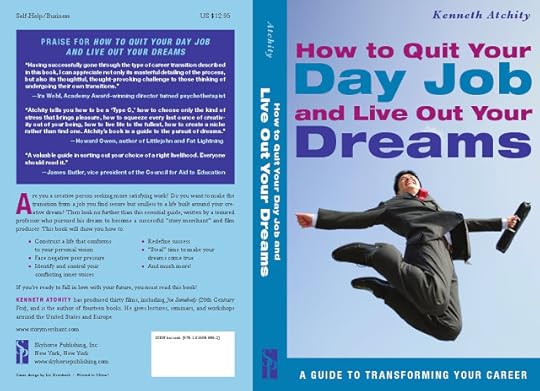
Are you in an unsatisfying job and would like to get out of your current line of work? Do you want to transition from a job that is secure but soulless, from a life that is created by others to one that is created by you which allows you to follow your creative dreams? If you do, this book is for you.
Kenneth Atchity was also in a job he despised. He was a tenured professor. He should have been on top of his game and happy. He had security, and everything he wanted financially. But he was still fundamentally unhappy because he felt drained and didn’t feel as if he was fulfilling his creative purposes in life. How sad? He always wanted to be a story merchant and film producer. Then one day he dared to take the necessary steps to make his dreams come through. And this is how the idea for this book was born.
Kenneth Atchity’s book is for everyone who feels that their creativity has been squelched at their current line of work. How to Quit Your Day Job and Live Your Dreams will show the reader how to create a personal vision and recreate your life so that it fulfilling your vision, face negative peer pressure, identify and control conflicting inner voices, redefine what it means to live successfully for yourselves, steal time to make your dreams come true, and a lot more. The book is full of advice for the person who is still working at a dead end job and wants to take fruitful steps to get out. Kenneth Atchity shows the reader how to do this through consistent planning, a bit of hard work, and perseverance.
The good news is that we can all reclaim our lives, and we don’t have to stay in dead end jobs for the rest of our lives and live unhappy and unfulfilled days. We can be bold and recreate our lives so that they are what we want them to be. So, if you want your life to change for the better, pick Kenneth Atchity’s book today and get ready to transform your life one step at a time.

Published on May 24, 2013 00:00
May 22, 2013
Let Story Merchant Books turn your script into a novel!
 Script Lit Turns Unused Screenplays Into e-Novellas
Script Lit Turns Unused Screenplays Into e-Novellas Looking to transform Hollywood’s pile of unproduced scripts into publishable e-books, James West, a motion-picture industry entrepreneur, has launched Script Lit. The company licenses optioned, but never produced, scripts, to turn them into commercial fiction. At the end of April, Script Lit released its first e-book novella—Mom of the Year by screenwriter Denise Pischinger—and plans to offer three more titles later this year. It’s no secret that Hollywood studios option a lot of scripts that never become movies—scripts that may be quite good but are victimized by bad timing or arbitrary decisions of the studio, West said. West has been making his pitch to Hollywood studios since last fall, asking them to give him access to their scripts and hoping to sell the studios on the potential for finding bestsellers in an otherwise inert mound of content. “There are compelling stories in these scripts. The studios love the idea,” he said, though he acknowledged that some have been slow to act, adding, “there’s a lot of legal stuff to go through.”
Mom of the Year is the story of a 30-something woman who gets into a battle with another mother in her school volunteer group. The book is available for sale at all major e-tailers, and right now, Script Lit is offering a free download of the title. The company is also publishing Ambrose Fountain by Brian Sieve, due out in June, the story of an ordinary guy who comes to believe that a fountain on his property can grant wishes; and The Enders by Rich Farrell, slated for August, about five people in different countries and their reaction to the news that the world is ending.
West said he has been looking to partner with traditional book publishers. His original plan was to get access to the scripts through a studio, pick the best unproduced content, and act as a kind of “producer,” while working with a New York publisher to secure a ghostwriter, edit, and publish the book. West met with “most of the Big Six,” who he said have been “overwhelmingly positive” but also reluctant to act. (Although he said one publisher wanted to get involved but only if the script was also being produced as a movie—of course, if that were the case, West was quick to note, publishing wouldn’t be a problem.) “It will take a visionary publisher to do it this way,” he said.
So West decided to launch Script Lit and publish the books himself as e-book original novellas, with POD paperbacks to come. West said he licenses the rights to each script directly from the writer’s agent or manager and hires a ghostwriter to create a narrative context for the story. He noted that screenwriters aren’t necessarily novelists, so he’s put together a staff with two in-house novelists who have experience writing in a variety of commercial genres. “We keep all the script’s original dialogue in the book—the dialogue is important—and take the setting and tone, and I have a staff of writers enrich the story and turn it into literary and narrative prose.” He emphasized that the original screenwriter is credited as the book’s author.
“We typically offer the original screenwriter up to 50% of royalties,” West said, noting that his terms will likely change once he’s able to get an agreement with a conventional publisher, who may want to offer an advance or split royalties differently. “I always ensure that the original writers get the best deal possible,” he said, adding that Brian Sieve will get “a 50-50 split of all future royalties.”
Zach Tann, literary manager and partner at Magnet Management, which manages the careers of screenwriters, represents Sieve. Tann said, “It’s hard to sell a screenplay to the studios these days if it isn’t a huge franchise. There’s a lot of good material that isn’t known. So here’s a script that can be turned into an e-book and read. It seemed like a good way to get more attention, and there’s not a whole lot to lose.”
“I’m surprised this hasn’t been done before,” Tann added. “So many scripts are never sold, and they may be good. Selling to the studios is about timing, you may have a great script but it may be the wrong time.” He said that Sieve worked closely with West and his staff during the novelization of the script, providing them with notes and feedback. “At the very least a lot more people will get to actually read it.”
West, who is also cofounder of TitleDoctors, a firm that researches and provides marketable titles for films, said he’s offering free downloads of Mom of the Year and the book is getting some attention on Goodreads and Facebook, as well as generating good reader reviews on Amazon. He admitted that it was never his intention to become a publisher, emphasizing that “the goal is still to get the studios and conventional publishers involved in Script Lit.”
“Once these books hit their stride,” he said, “I’d like to go back to the studios and say, ‘See, we did it. Now, open your archives and let us see which scripts are bestsellers waiting to happen.’”

Published on May 22, 2013 00:00
May 21, 2013
NOBODY WALKS' Dennis Walsh with prosecutor Stephanie Sparagna
Deputy D.A. Stephanie Sparagna at the Biltmore Hotel where the LA County Bar Association named her & her co-counsel, Natalie Adomian, Prosecutors of the Year for their work in convicting a female CHP officer who had murdered her husband.
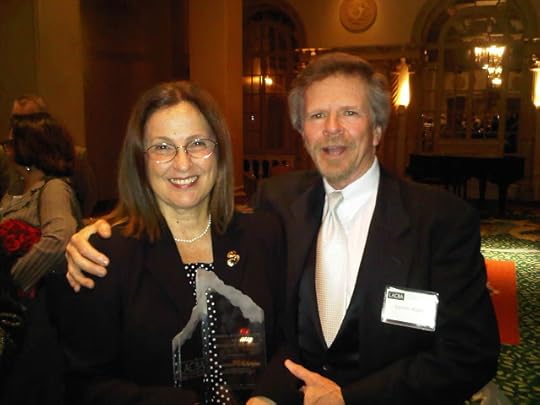



Published on May 21, 2013 00:00
May 20, 2013
Raven Reviews Interview!
Interview! Ken Atchity Discusses His Latest Book: The Messiah Matrix
Ok, I loved Dan Brown’s books. How sacrilegious, I
know. And I call myself a Christian. To me, his books were nothing more
than great fictional thrillers. It sparked a few conversations about
“what if…” But, that’s it.
So, when I heard another book exists that rivals Dan Brown’s stories, I could not pass up the chance to meet the mind behind that one. Meet Ken Atchity!
Here are the interview highlights:

What’s the name of your most recent book? If you had to sum it up in 30 words or less, what would you say?
The Messiah Matrix, an iconoclastic thriller that questions the origins of Christianity when the lead characters converge to uncover a secret the Vatican has protected for over two millennia.
What has inspired you to write this book?
My childhood fascination with the parallels between the Roman Empire and the Roman Catholic Church.
Are you religious?
I’m definitely not religious, though I’m interested in the spiritual core and ritual of all religions. I’d call myself spiritual.
Have your religious views impacted this book (Messiah Matrix)? How?
My view of the dangers and damages of organized religion were a major impetus behind this book, which ends with a vision of how humanity can be spiritual without being fanatically organized.
How much of this book (Messiah Matrix) is fact vs. pure fiction?
That’s for the reader to decide. Anyone interested can request my long list of sources.
How has Dan Brown influenced your writing?
I decided to write this novel DESPITE its being similar to Dan Brown’s books, because I believe its premise is more revolutionary and thought-provoking than the premise of THE DA VINCI CODE, a book I admire.
Did you picture any specific real-life people when you created your characters?
I did have a person in mind for Emily Scelba, the heroine; and a few other characters as well. The most remarkable thing to report is that the book predicts not only a JESUIT pope but an ARGENTINE JESUIT pope. Don’t know what I was channeling at the time!
What was the oddest thing you ever had to research while writing?
Probably the diet of Caesar Augustus…
Who designed the cover on your book? (Who designs the covers on your books?)
A British designer designed the cover, James Reid. It rocks!
If you had to do it all over again, what would you change in your latest book?
I’d change the background on how Emily found an ancient Augustan aureus—and I may still do that.
How long does it usually take you to write a book?
It can range from a year to several. Messiah Matrix took about two years.
Do you have a day job? Family? How do you balance it all?
My day job is working with writers to develop their stories into books and films. A family? I’m married to a wonderful woman, and have two great children, and four grandchildren… How do make time to write? I prioritize it and keep my stopwatch running.
What are you reading now?
I’m reading Steve Job’s autobiography.
If you were shipwrecked on an island, what three books would you want with you?
Wow. Great question. Probably Moby Dick, Don Quixote, and the Odyssey.
If you could have any author as a mentor, who would it be and why?
I had a wonderful mentor in John Gardner (On Moral Fiction, Grendel, Nickel Mountain, etc.). If I could have another, it’d be Dan Brown because I love how he thinks.
Has there ever been a movie that you thought was better than the book?
Yes, Prince of Tides is one example, though I loved the book too; and Birdy.
What tips do you have for aspiring writers? What have you learned along the way?
I’ve learned the only rules are never give up, and go for it! Great things are accomplished only by writers who don’t quit no matter how hard everything becomes.
What’s next for you? Any current/future writing project?
Always. I’m finishing a book of quotes for writers, then will edit and publish my second book of poetry (the first appeared in 1978), then another book for writers. I’m not planning to write another novel until I find another great story.
MORE ABOUT KEN…
With more than forty years experience in the publishing world, and
twenty years in entertainment, Dr. Ken Atchity is a self-defined “story
merchant” - writer, producer, career coach, teacher, and literary
manager, responsible for launching dozens of books and films. His life’s
passion is finding great storytellers and turning them into bestselling
authors and screenwriters. Ken has produced 30 films and 14 books.
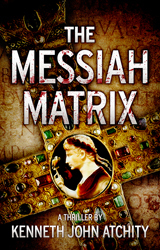
ABOUT THE MESSIAH MATRIX:
First Jesuit Pope predicted in THE MESSIAH MATRIX!
To what
lengths would the Vatican go to suppress the secret origins of its
power? Current papal politics has made this thriller eerily prophetic!
The Messiah Matrix is a myth-shattering novel whose protagonists delve
into the secrets of the past—and expose the fundamentalists who hide
them still.
A renowned scholar-monsignor is killed in Rome while
a Roman coin is recovered from a wreck off the coast of ancient Judea.
It’s up to his young American protégé—a Jesuit priest—and a vivacious,
brilliant archaeologist to connect these seemingly disparate events and
unravel the tapestry that conceals in plain view the greatest mystery in
the ecclesiastical world. Together they pursue their passion for
truth—while fighting to control their passion for each other. What they
uncover is an ancient Roman imperial stratagem so controversial the
Curia fears it could undermine the very foundations of the Roman
Catholic faith—much like the secrets emerging from the Vatican in
today’s news.
From the ancient port of Caesarea to Rome’s
legendary catacombs and the sacred caves of Cumae, this contemporary
novel follows their exhilarating quest to uncover the truth about the
historical existence of the real “Christian Savior.”
BOOK LINKS:
Website
Amazon

Published on May 20, 2013 00:00
May 19, 2013
Book Review: Dr Fuddle and the Gold Baton by Dr Warren L Woodruff by ajoobacats
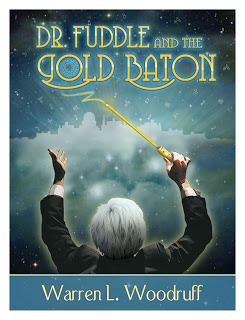
Description
When the dark musician Jedermann and his fierce Seirens of Dis gain control of the legendary Gold Baton, Tyler, his sister Christina, and their friends are drawn into a perilous adventure foretold by an ancient prophecy.
Guided by the mythical Dr. Fuddle, the explorers must leave earth and journey to Orphea. Will the Messengers of Music be able to save the world of the immortal composers from chaos and destruction? For them to have even a chance at victory, they must master the most difficult instruments of all—themselves.
Review
A delightful tale of good versus evil, by a music teacher, where the power of good is conveyed through classical music. This is a lovely book for children from the age of 10, who are advanced readers, the illustrations are lovely but I wish there were more.
It’s difficult conveying a story like this without actual music but Dr Woodruff does it well. For those children who are musically inclined this is a good story which aids and enthuses children learning music. It isn’t the most imaginative story for children around but it ties music and reading together adequately, despite the lack of audio.
A good lesson about finding your voice no matter what disabilities maybe in your way.

Published on May 19, 2013 16:15
May 18, 2013
Harriet Klausner Gives Dennis Palumbo's Night Terrors Five Stars!
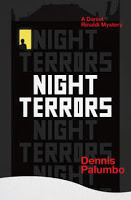
 Fabulous Police Procedural, May 18, 2013
Fabulous Police Procedural, May 18, 2013By
Harriet Klausner
Night Terrors
Dennis Palumbo
Poisoned Pen, May 7 2013, $24.95
ISBN 9781464201318
In
Pittsburgh, the FBI quietly asks psychologist Dr. Daniel Rinaldi to
help former FBI special agent Lyle Barnes deal with his experiences of
hunting serial killers. Barnes was the best because he could get inside
the heads of these predators, but now in retirement they get inside his
head every time he tries to sleep. Adding to his Night Terrors is a
serial killer targeting anyone involved in ending John Jessup's
homicidal reign; which includes Barnes who captured the psychopath and
by extension Rinaldi may be on the murderer's list.
At the same
time, Wes Currim confesses to decapitating businessman Edward Meachem in
Wheeling. Wes refuses to show the body unless the shrink who works
with the Pittsburgh PD accompanies them. Thus at the request of Chief
Block, Daniel arrives in nearby West Virginia as an obviously disturbed
Wes takes him and WPD to the severed corpse. Wes' mom Maggie believes
her troubled son never killed the victim and pleads with Rinaldi to
prove her contention while in Pittsburgh, the Jessup body count rises
and Barnes vanishes from federal protective custody.
The third
Daniel Rinaldi mystery (see Fever Dream and Mirror Image), is a fabulous
police procedural as the protagonist struggles between patient
confidentiality and law enforcement needs. Fast-paced throughout,
readers will relish this twisting thriller as Wheeling and Pittsburgh
keep Dr. Rinaldi and two police departments overworked trying to prevent
further homicides.

Published on May 18, 2013 18:21
May 17, 2013
Guest Post on Music Plus Books
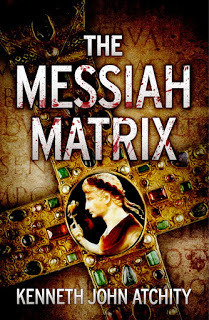
The Messiah Matrix Visit the Messiah Matrix Facebook page for some timely postings about the new pope, Francis, and his attempt to restore spiritual power to the ancient Roman Catholic Church, that in recent decades has shown so many signs of decadence and cynicism.
My novel explores that ancient institution, tracing its roots to the Roman Empire itself and in particular to Emperor Caesar Augustus who instituted tolerance in Rome once he'd completed his conquest of the world. Why would anyone take the time from their busy day to read this book? It's romantic. It's a thriller. It's contemporary. It pits a doubting young Jesuit priest against a vivacious archaeologist who's found evidence that the origins of Christianity are not what we've been taught. Together they find the truth behind centuries of mystification, unmask corruption in the church, and change the world to a clear understanding of why organized religion stands in the way of the very values it professes to uphold.
I've been thrilled at readers' reactions to the novel, even when they don't accept its premise because my purpose was to get people thinking about the truths they accept without question. We must choose to make the world more tolerant, recognizing that everyone has the right to worship the divine potential in human nature in the way they choose. Tell me your thoughts!
The first five to respond to this post will receive a free signed copy of the book if you copy your response to me at drk@storymerchant.com

Published on May 17, 2013 00:00
Guest Post on Music Plus Books: MESSIAH MATRIX FREE TO FIRST RESPONDERS

The Messiah Matrix Visit the Messiah Matrix Facebook page for some timely postings about the new pope, Francis, and his attempt to restore spiritual power to the ancient Roman Catholic Church, that in recent decades has shown so many signs of decadence and cynicism.
My novel explores that ancient institution, tracing its roots to the Roman Empire itself and in particular to Emperor Caesar Augustus who instituted tolerance in Rome once he'd completed his conquest of the world. Why would anyone take the time from their busy day to read this book? It's romantic. It's a thriller. It's contemporary. It pits a doubting young Jesuit priest against a vivacious archaeologist who's found evidence that the origins of Christianity are not what we've been taught. Together they find the truth behind centuries of mystification, unmask corruption in the church, and change the world to a clear understanding of why organized religion stands in the way of the very values it professes to uphold.
I've been thrilled at readers' reactions to the novel, even when they don't accept its premise because my purpose was to get people thinking about the truths they accept without question. We must choose to make the world more tolerant, recognizing that everyone has the right to worship the divine potential in human nature in the way they choose. Tell me your thoughts!
The first five to respond to this post will receive a free signed copy of the book if you copy your response to me at drk@storymerchant.com

Published on May 17, 2013 00:00
May 15, 2013
Film Maker Lila French Discusses Her Film BIRDBATH in Reel Nola Magazine
Published on May 15, 2013 00:00

